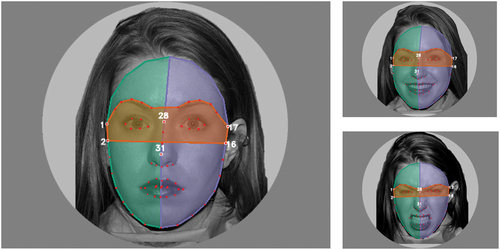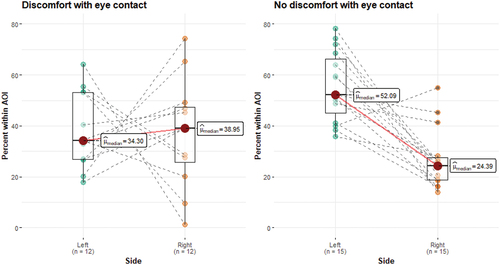Figures & data
Figure 1. An example of the presented stimuli of angry (lower right), happy (upper right), and neutral (lower right) facial expressions with automatic generation of areas of interest. For each presented image, the eye area (orange) and the left (green) and right (blue) facial areas were automatically determined. Facial landmarks used for defining AOI boundaries are displayed as red points.

Table 1. Demographic, clinical, and eye gaze characteristics of the participant sample.

